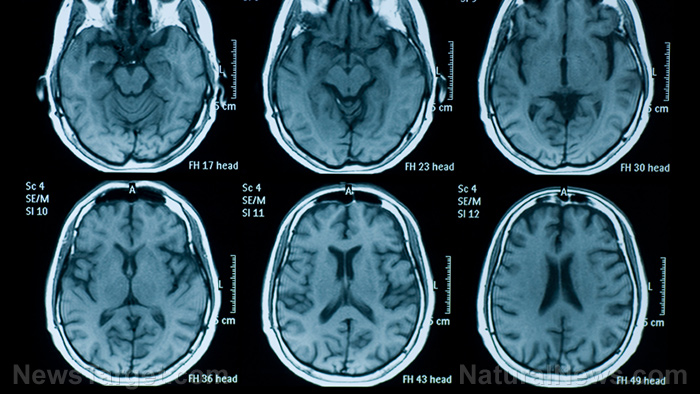
Ependymoma – causes, side effects and treatments at NaturalPedia.com
Saturday, March 17, 2018 by Zoey Sky
http://www.naturalpedia.com/ependymoma-causes-side-effects-and-treatments-at-naturalpedia-com.html

An ependymoma is a glial tumor of the ependymal cells along the center of the spinal cord and the ventricles of the brain.
Ependymomas are physically soft and they are often gray or red color. These tumors sometimes contain mineral calcifications or cysts inside them. An ependymoma can occur anywhere where ependymal cells can be found in the central nervous system.
Ependymoma cancer is rare. It occurs in both children and adults, but ependymomas are more common in children. Men and women are equally at risk of developing it.

Known side effects of ependymomas
The side effects of ependymomas may vary depending on each case. Some individuals may have noticeable side effects along with the tumor, but little or no symptoms are identified.
Side effects of ependymomas may include:
- Headaches
- Nausea and vomiting
- Neck pain
- Seizures and convulsions
- Spasmodic eye movements
- Tingling, numbness, or weakness in the limbs
- Trouble with balance or walking
- Vision changes (like blurred vision or vision loss)
If you experience persistent symptoms, consult a healthcare professional immediately.
While ependymomas develop in all age groups, they are more common in adolescents than adults. Tumors may differ depending on the patient’s age. In children, the tumor is often found in the brain. Meanwhile, in adults, ependymomas are usually seen along the spine.
Infants with an ependymoma may seem irritable and they may have trouble sleeping. A child’s head may grow irregularly, and they might develop slower than expected, either physically or mentally.
Ependymomas are rare and only 200 cases are reported in adults and children in the U.S. annually. Like with the majority of brain tumors, there are no known causes for ependymomas. Scientists posit that ependymomas often cluster in families, which implies that there is an inherited risk. Spinal ependymomas are more common in people with neurofibromatosis type 2 (NF2), a condition where noncancerous tumors grow in the nervous system.
Body systems harmed by ependymomas
The possible complications of ependymomas include:
- A worsening of balance, speech, or swallowing due to surgery — These side effects often subside after several weeks or months.
- Learning disabilities and decreased intellect in most children due to radiation treatment to large areas of the brain — These complications are usually worse in younger children, patients exposed to large doses of radiation, and those who have had radiation to large areas of the brain.
- Damage to the hormone-producing hypothalamus and pituitary gland may also be caused by radiation — This can result in slow growth and weakening of the muscles near the spine.
- Hearing loss — Platinum-based chemotherapeutic drugs (such as cisplatin) and radiation delivered near the ears may cause hearing loss.
- Increased risk of developing other brain tumors or cancer types because of radiation and chemotherapy.
- Chemotherapy can also cause infertility.
Food items or nutrients that may prevent ependymomas
The following foods or nutrients can help prevent ependymomas:
- Antioxidants — Antioxidants can help prevent brain cancer. Sources include fruits like apples, blueberries, grapes, oranges, and strawberries.
- Boswellia serrata — Resin from this tree effectively reduces inflammation in both animals and humans. Inflammation is the main cause of brain edema.
- Folic acids — Folic acid can help prevent cancer cells from spreading. Sources include beans, berries, fruits like oranges, leafy vegetables, rice, and spinach.
- Indirubin — Indirubin is a chemical component used in traditional remedies for brain tumors. It comes from the indigo plant.
Treatments, management plans for ependymomas
If an ependymoma is very small and not causing any immediate danger, a patient may be advised to wait while a healthcare professional monitors the tumor for progression. Treatment for ependymomas include:
- Clinical trials — Healthcare professionals may recommend clinical trials to patients, but the decision to participate in one is always up to the individual.
- Medications — Medication may be prescribed to help manage symptoms of both the ependymoma and other cancer treatments since the latter may have adverse side effects.
- Radiation therapy — Radiation therapy is often recommended to remove any lingering tumor cells post-surgery. Chemotherapy can also help with some types of ependymoma, with varying degrees of effectiveness.
- Surgery — The procedure is often done to remove as much of the tumor as possible. The entire tumor may be removed in certain cases. However, only parts of it may be removed if it is located in more delicate areas.
Patients will be observed closely during treatment to monitor any changes in their condition which may require alterations to current treatment/s.
Where to learn more
Summary
An ependymoma is a glial tumor of the ependymal cells along the center of the spinal cord and the ventricles of the brain.
The side effects of ependymomas may vary depending on each case. Some individuals may have noticeable side effects along with the tumor, but little or no symptoms are identified. Side effects of ependymomas may include headaches, nausea and vomiting, and neck pain.
Foods and nutrients that can help prevent ependymomas include antioxidants, Boswellia serrata, folic acids, and indirubin.
Treatment for ependymomas include clinical trials, medications, radiation therapy, and surgery. Patients will be observed closely during treatment to monitor any changes in their condition which may require alterations to current treatment/s.
Sources include
Tagged Under: Tags: ependymoma





